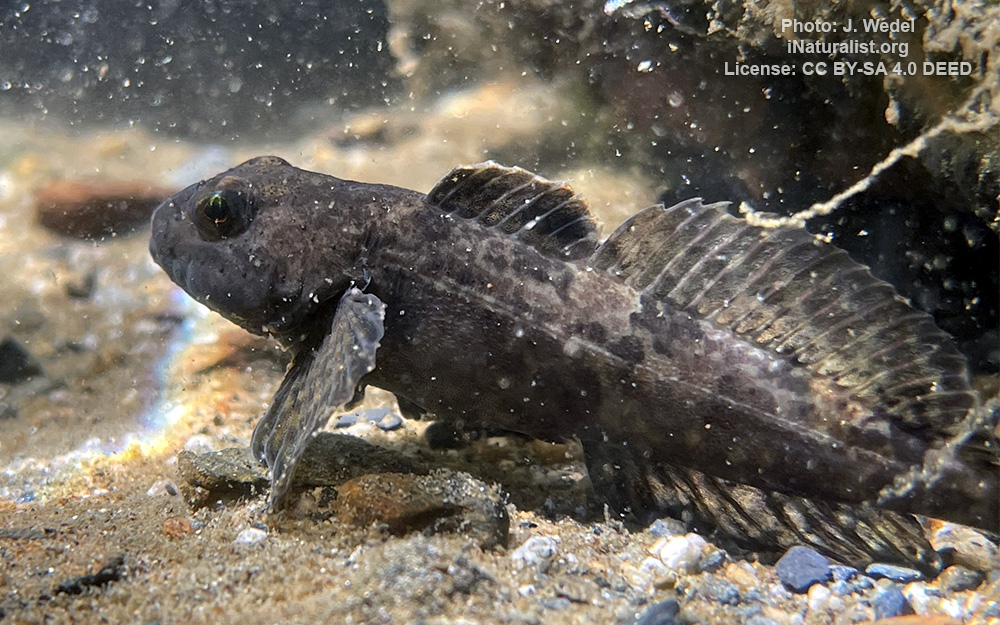Prickly sculpin
(Cottus asper)

Image source: J. Wedel | inaturalist.org
Classification
General data
The prickly sculpin (Cottus asper) is a species of ray-finned fish belonging to the family Cottidae, the typical sculpins.
It is native to the river drainages of the Pacific Slope of North America from Seward, Alaska south to the Ventura River of Southern California. It extends east of the Continental Divide in the Peace River of British Columbia. It has also been introduced to several reservoirs in Southern California.
This fish can reach about 30 centimeters in length, but it is usually smaller, often around 7 centimeters.
It is mature at 2 to 4 years of age, and its maximum lifespan is around 7 years. It is brown, gray, or olive green on its upper parts and white or yellowish ventrally. There are dark spots or bars on the back and dark bars on most of the fins. The breeding male is darker in color than the female and nonbreeding male. Both sexes develop an orange coloration along the edge of the first dorsal fin during breeding. The pectoral fins are large and fan-shaped. The body of the fish is prickly; inland-dwelling fish tend to be more prickly than those at the coast.
There are two main forms of the species. The inland form lives in lakes, while the coastal form lives in rivers and swims down into brackish estuaries to breed. A catadromous species, it is tolerant of high and low salinities.
It is generally a bottom-dwelling species. It is nocturnal, feeding at night.
The diet of the fish includes water invertebrates, insects and their larvae, salmon eggs, fish larvae, especially those of the Sacramento sucker (Catostomus occidentalis occidentalis), and zooplankton, especially Daphnia spp. Larger sculpins eat small fish, frogs, and molluscs. The adults are known to cannibalize the juveniles.
In its habitat it lives alongside its relative, the coastrange sculpin (Cottus aleuticus), which is quite similar to it in terms of morphology and behavior. It can also be found with the three-spined stickleback (Gasterosteus aculeatus), steelhead trout (Oncorhynchus mykiss), Klamath small-scale sucker (Catostomus rimiculus), coastal cutthroat trout (Oncorhynchus clarki clarki), Chinook salmon (O. tshawytscha), and coho salmon (O. kisutch).
This fish is common in most of its range, becoming quite abundant in the summer when recruitment occurs and the previous season\\\\\\\\\\\\\\\\\\\\\\\\\\\\\\\'s juveniles join the population. While it is native to many waterways in California, it represents an introduced species in some Southern California lakes, rivers, and tributaries, such as the Santa Clara River, the Santa Ana River, Irvine Lake, and Big Bear Lake. It occurs in reservoirs such as Pyramid Lake. It was likely introduced to many of these places from farther north via the California Aqueduct.












